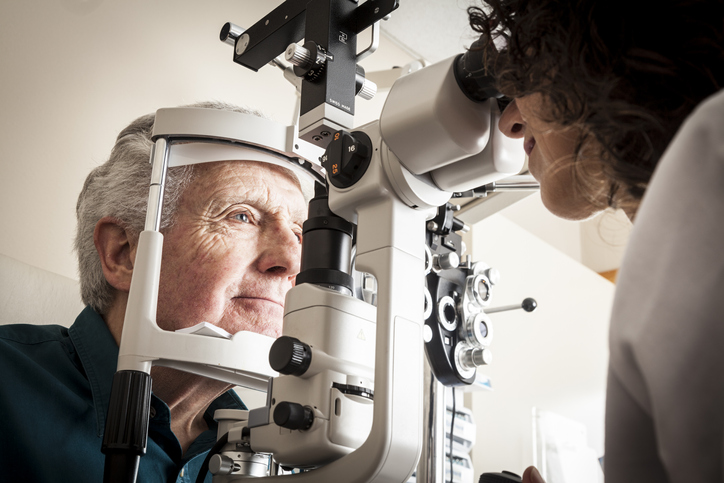
Learn essential facts about age-related macular degeneration here.
If your older family member has been diagnosed with macular degeneration, you’ll likely be faced with multiple questions and concerns. And you’re not alone; an approximate 11 million seniors in America alone have been given the same diagnosis, and that number is anticipated to double by the year 2050. Grace Home Care, experts in respite care Topeka families trust, is here with the insight you need to more fully comprehend this condition and how to best help your senior loved one.
What is macular degeneration?
Age-related macular degeneration (ARMD) is a disease in which the middle of the retina (the macula) is damaged, affecting central vision and the details needed in reading, driving an automotive, watching the TV or a movie, and recognizing faces. It is the most common cause of irreversible central vision loss in seniors, having an effect on 1 out of every 3 adults age 75 and older. It’s also important to know that macular degeneration will not generally lead to full loss of sight; peripheral vision stays intact.
What are the two types of macular degeneration?
ARMD can manifest in two forms:
- Wet ARMD: Accounting for about 10 – 20 percent of all diagnoses, wet age-related macular degeneration creates a build-up of drusen – deposits of fat – and an irregularity of the blood vessels below the retina. Both of these manifestations together lead to retina damage. Wet ARMD can progress swiftly and result in extreme and permanent loss of central vision.
- Dry ARMD: Dry ARMD comprises the vast majority (up to 90%) of macular degeneration diagnoses. As with wet ARMD, drusen appears below the retina, leading to a thinning of the macula and ultimate loss of central vision. Advancement is more gradual in this type of ARMD, but it can develop to wet ARMD.
In both types of ARMD, early diagnosis and continual monitoring are essential to protecting remaining vision.
How is ARMD diagnosed?
All seniors need to receive eye exams at least on a yearly basis. To detect ARMD, the eye doctor will dilate the eyes and conduct a fundoscopy, fundus photography, and a visual acuity test. If ARMD is presumed, an additional test, a fluorescein angiography, will very likely be required. In this test, dye is injected to discover any leakage in the blood vessels. The Amsler grid eye test is a quick and easy tool that can also be tried at home as a first step in determining if ARMD might be a possibility.
What treatments are available for ARMD?
While there’s presently no cure for macular degeneration, there are multiple treatment options the doctor may want to try to stop the progression of the disease:
- Antioxidants and zinc
- Afibercept
- Ranzibizumab injections
- Pegaptanib sodium injections
- Photodynamic therapy
- Bevacizumab injections
- Vision rehab and low vision aids
Is it possible to prevent macular degeneration?
Making healthy lifestyle decisions, like quitting (or not starting) smoking, exercising regularly, adopting a wholesome diet that includes an abundance of vegetables, fruits, and fish, keeping a healthy weight and normal blood pressure, and wearing eye protection when outdoors, such as sunglasses and hats, may help decrease the chance of developing ARMD.
For a trusted partner in care for a senior with macular degeneration to provide help with transportation, medication reminders, meal preparation, light housework, and much more, contact the experts in respite care in Topeka at Grace Home Care any time at 785-286-2273.
